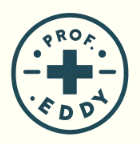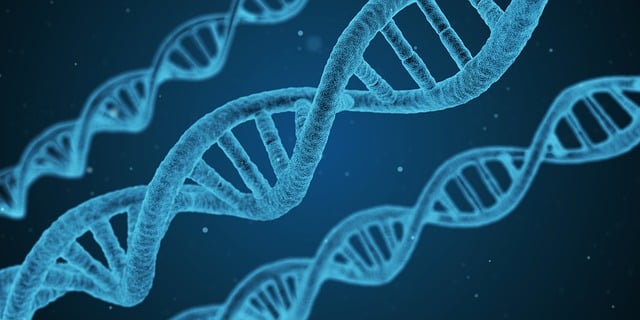The Discovery of Eight Constitutional Medicine (ECM): Why Are There Only Eight Types?
Understanding the Concept of Constitution
Before delving into the Eight Constitutional Medicine (ECM), it is essential to understand what “constitution” means in the context of traditional medicine. The term is widely used in various fields, but in Eastern medicine, constitutions are categorized into two main types:
- Variable Constitution: This refers to the body’s current tendencies, which are not inherited and can change over time due to age, environment, or lifestyle modifications.
- Immutable Constitution: This refers to the inherited characteristics of internal organs, which do not change over a lifetime. While health conditions may improve, the fundamental constitution remains the same.
Both Sasang Constitutional Medicine (SCM) and Eight Constitutional Medicine (ECM) fall under the category of immutable constitutions, meaning they are genetically inherited and do not change throughout life. For instance, if a parent has a Metal-Yang or Metal-Yin constitution, their offspring will inherently belong to one of these categories.
The Origins of Eight Constitutional Medicine
The Founder: Dr. Kwon Do-Won
ECM was founded by Dr. Kwon Do-Won (born in 1924), a renowned Korean doctor who dedicated his life to clinical practice and health management. Dr. Kwon did not claim to have “created” ECM but rather “discovered” it. This distinction arises because he believed that the fundamental constitutions of human beings were pre-existing and not invented by humans. Dr. Kwon, initially a deep student of Sasang Medicine, made a groundbreaking discovery in clinical practice. He noticed that each constitution exhibited a unique, unchanging pulse pattern. No matter how many patients he examined, the pulse patterns consistently fell into one of eight distinct categories, leading to the identification of Eight Constitutional Medicine.
Why Are There Exactly Eight Constitutions?
The existence of eight constitutions is not arbitrary but grounded in fundamental principles of traditional Eastern medicine and philosophy. While there are further interpretations, the core reason can be summarized as follows:
- Evolution from Yin-Yang and Four Constitutions: The theory of ECM builds upon the Sasang (Four Constitutional) Medicine, which itself derives from the fundamental Yin-Yang theory. As the Yin-Yang concept splits further, it results in the emergence of eight distinct constitutional types.
- The Role of Internal Organs: The human body operates based on five primary internal organs—heart, lungs, liver, kidneys, and spleen. These organs’ interactions determine constitutional differences. Clinically, these interactions lead to a total of eight meaningful constitutions, beyond which further classifications lose practical significance.
- Numerical Significance in Eastern Philosophy:
- The number 3 represents the first tangible result in metaphysics.
- The Tai Chi (Supreme Ultimate) theory states that Tai Chi first divides into Yin and Yang, then into Four Constitutions, and finally into Eight Constitutions.
- The number 8 in Eastern philosophy represents small but complete structures, indicating that these eight categories are the minimal but essential units of constitutional classification.
Could There Be More Than Eight Constitutions?
Some might wonder: “Why not 16 or 32 constitutions?” While it is theoretically possible to classify further, there is a fundamental limitation:
- The human body is governed by five major organs, meaning there are only a finite number of meaningful variations in their relationships.
- If we existed in a higher-dimensional reality beyond our current three-dimensional world, it might be possible to have more than eight constitutions. However, within our current physiological constraints, eight is the natural limit for meaningful constitutional differentiation.
Why Isn’t ECM Called “Eight Symbolic Constitutions”?
In ECM, the term “symbol” (象, Xiang) is not included in the name, and it should not be. To understand why, we need a brief look at Yijing (I Ching) metaphysics:
- The Tai Chi (Supreme Ultimate) exists beyond direct perception.
- Humans recognized Yin-Yang by observing Tai Chi.
- Further division into Four Constitutions (Sasang) represents the first tangible form, but not yet a fully structured reality.
- When these four forms split further into eight, they become fully realized structures with distinct characteristics.
- The number 8 in Eastern philosophy represents the first tangible realization of a structured existence, hence making it the most suitable number for defining human constitutional types.
Conclusion
The Eight Constitutional Medicine (ECM) is a groundbreaking discovery that classifies individuals based on immutable, inherited characteristics. Its foundation lies in the principles of Yin-Yang, Sasang Medicine, and the relationships between internal organs. Dr. Kwon Do-Won’s clinical observations led to the realization that no more than eight meaningful constitutional types exist within the human body. While further theoretical classifications are possible, they do not hold significant medical or practical value. The number 8 is not random—it represents the natural culmination of constitutional differentiation based on fundamental Eastern medical and philosophical principles. Understanding ECM not only provides insight into personalized medicine but also enhances our appreciation of how traditional medical systems approach human health holistically.
Frequently Asked Questions (FAQ)
Q1: Is my constitution inherited from my parents?
- Yes, your constitution is determined by genetics and remains unchanged throughout your lifetime.
Q2: Can someone have more than one constitution?
- No, each person has a single, fixed constitution that does not change.
Q3: Why can’t there be 16 or more constitutions?
- Because the human body functions based on five major organs, which interact in ways that only produce eight distinct, meaningful constitutions.
Q4: How is ECM different from Sasang Medicine?
- Sasang Medicine classifies people into four types, while ECM expands this into eight based on specific organ interactions and pulse diagnosis.
Q5: Can ECM be applied to modern healthcare?
- Yes, ECM is increasingly being integrated into personalized medicine, alternative therapies, and holistic health practices worldwide.
By understanding the fundamentals of Eight Constitutional Medicine, we can take a more personalized approach to health, leading to better well-being and disease prevention.
For the original Korean text, visit here. If you’re curious about the basics of traditional Korean medicine and health, read the following article:
What Your Sleeping Position Says About Your Health
Learn Why Studying JangSang Medicine is Important.
Frequently Asked but Silly Questions (Foods Good for the Liver??) Why Full, Thick Hair Is Considered Beautiful: The Fascinating Reasons Behind It (Hair Loss Story #1)


